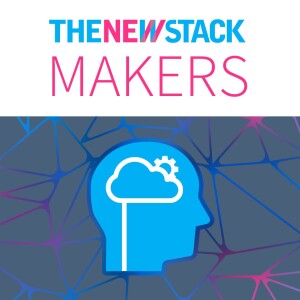
Couchbase’s Managed Database Services: Computing at the Edge
 2022-12-07
2022-12-07
Let’s say you’re a passenger on a cruise ship. Floating in the middle of the ocean, far from reliable Wi-Fi, you wear a device that lets you into your room, that discreetly tracks your move from the bar to the dinner table to the pool and delivers your drink order wherever you are. You can buy sunscreen or toothpaste or souvenirs in the ship’s stores without touching anything.
If you’re a Carnival Cruise Lines passenger, this is reality right now, in part because of the company’s partnership with Couchbase, according to Mark Gamble, product and solutions marketing director, Couchbase.
Couchbase provides a cloud native, no SQL database technology that's used to power applications for customers including Carnival but also Amadeus, Comcast, LinkedIn, and Tesco.
In Carnival’s case, Gamble said, “they run an edge data center on their ships to power their Ocean Medallion application, which they are super proud of. They use it a lot in their ads, because it provides a personalized service, which is a differentiator for them to their customers.”
In this episode of The New Stack Makers, Gamble spoke to Heather Joslyn, features editor of TNS, about edge computing, 5G, and Couchbase Capella, its Database as a Service (DBaaS) offering for enterprises.
This episode of Makers was sponsored by Couchbase.
5G and Offline-First AppsThe goal of edge computing, Gamble told our podcast audience, is bring data and compute closer to the applications that consume it. This speeds up data processing, he said, “because data doesn't have to travel all the way to the cloud and back.” But it also has other benefits
“This serves to make applications more reliable, because local data processing sort of removes internet slowness and outages from the equation,” he said.
The innovation of 5G networks has also had a big impact on reducing latency and increasing uptime, Gamble said.
“To compare with 4G, things like the average round trip data travel time between the device, and the cell tower is like 15 milliseconds. And with 5G, that latency drops to like two milliseconds. And 5G can support they say, a million devices, within a third of a mile radius, way more than what's possible with 4G.”
But 5G, Gamble said, “really requires edge computing to realize its its full potential.” Increasingly, he said, Couchbase hears interest from its customers in building “offline-first” applications, which can run even in Wi-Fi dead zones.
The use cases, he said, are everywhere: “When I pass a fast food restaurant, it's starting to become more common, where you'll see that, instead of just a box you're talking to, there's a person holding a tablet, and they walk down the line, and they're taking orders. And as they come closer to the restaurant, it syncs up with the kitchen. They find that just a better, more efficient way to serve customers. And so it becomes a competitive differentiator forum.”
As part of Couchbase’s Capella product, it recently announced Capella App Service, a new capability for mobile developers, is a fully managed backend designed for mobile, Internet of Things (IoT) and edge applications.
“Developers use it to access and sync data between the Database as a Service and their edge devices, as well as it handles authenticating and managing mobile and edge app users,” he said.
Used in conjunction with Couchbase Lite, a lightweight, embedded NoSQL database used with mobile and IoT devices, Capella App Services synchronizes the data between backend and edge devices.
Even for workers in remote areas, “eventually, you have to make sure that data updates are shared with the rest of the ecosystem,” Gamble said. “ And that's what App Services is meant to do, as conductivity allows — so during network disruptions in areas with no internet, apps will still continue to operate.”
Check out the rest of the conversation to learn more about edge computing and the challenges Gamble thinks still need to be addressed in that space.
More Episodes
 2024-11-07
2024-11-07
 2024-10-31
2024-10-31
 2024-10-24
2024-10-24
 2024-09-19
2024-09-19
 2024-08-22
2024-08-22
 2024-08-08
2024-08-08
 2024-07-25
2024-07-25
 2024-07-02
2024-07-02
 2024-06-27
2024-06-27
Create your
podcast in
minutes
- Full-featured podcast site
- Unlimited storage and bandwidth
- Comprehensive podcast stats
- Distribute to Apple Podcasts, Spotify, and more
- Make money with your podcast
It is Free
- Privacy Policy
- Cookie Policy
- Terms of Use
- Consent Preferences
- Copyright © 2015-2024 Podbean.com




